(ES) SOME EARLY AUXILIARY STEAMERS
SARAH SANDS -The first scres steamer to cross the Pacific from
the West Coast of
North America to Australia. At the time of her
building the second largest iron steamer
after the GREAT BRITAIN. (Ship details below.)
.
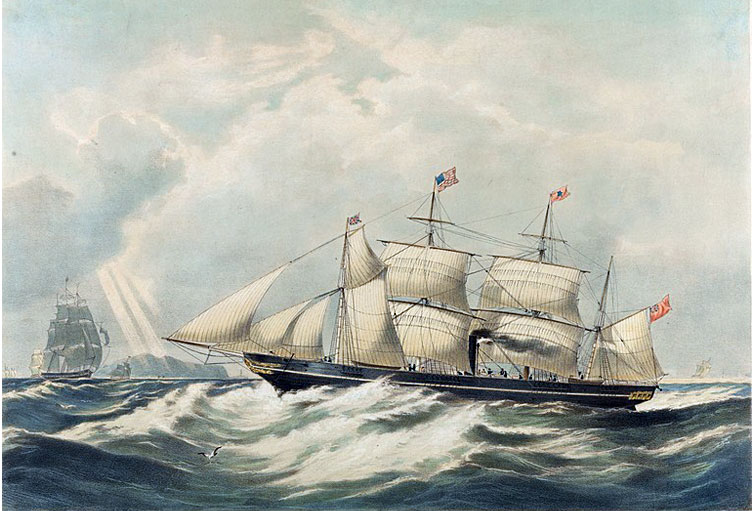
Lithograph by Samuel Walters
National Maritime
Museum, Greenwich, U.K.
(PY0245)
SOPHIA JANE - paddle
steamer 256t 1826, Designed for the carriage
of
passengers
between England and France. The voyage to Australia
was a
speculation. She arrived in Sydney on the 15th May 1831.
the first
steam
vessel to arrive
there. A public company was established, the vessel
purchased, and a service established between the Hunter and
Sydney
which ran
successfully
for several years.
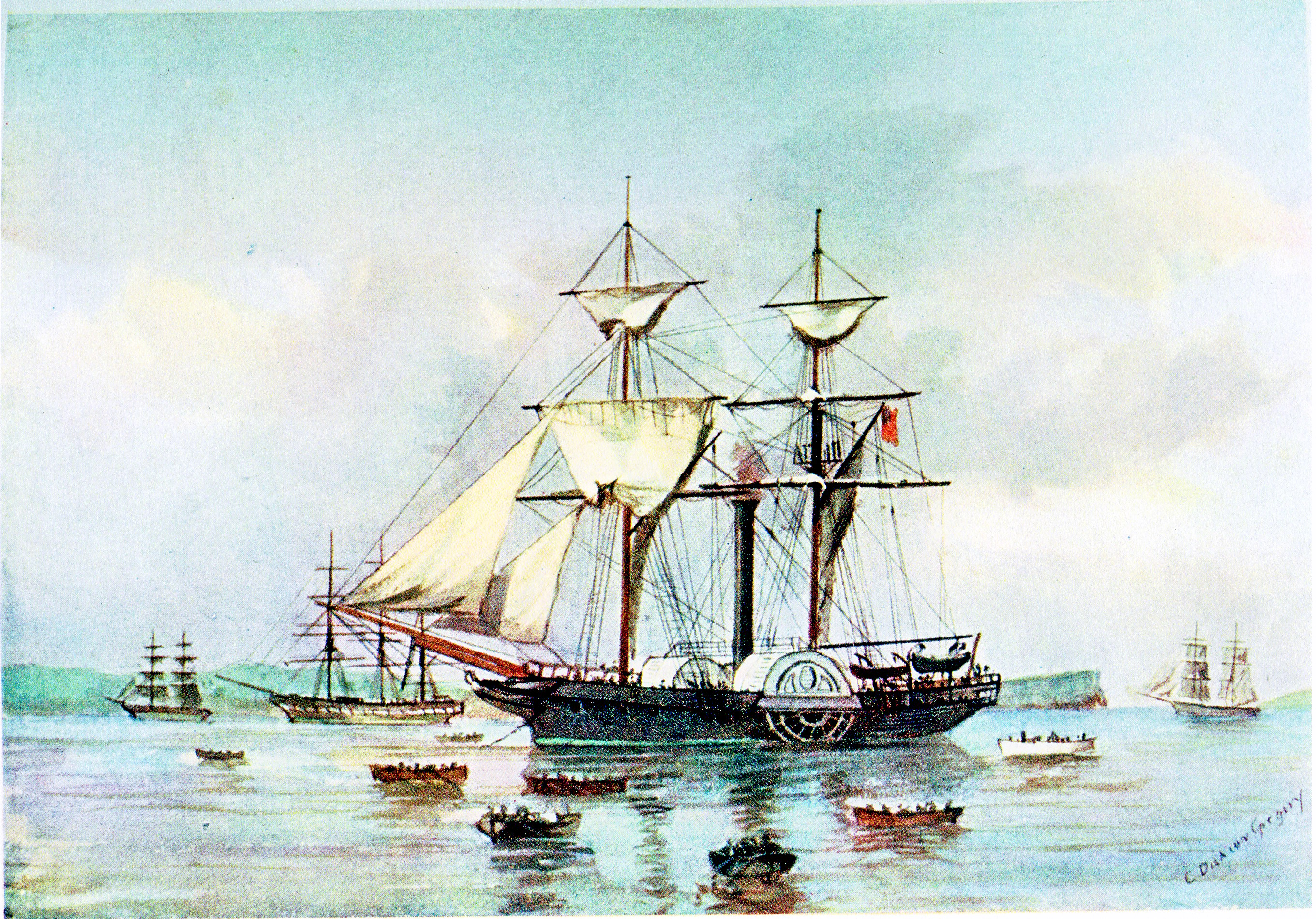
Artist:
Charles Dickson Gregory
From the artist's "Australian Steamships"
ANTELOPE
- iscs
778t 1845 Liverpool (In 1852, purchased by Millers
&
Thompson,
Liverpool merchants in the Australian trade). The vessel
had been
built for the Brazilian trade, and the new owners had the vessel
lengthened and
new machinery installed. The tonnage above from the
Lloyds
Register
of 1855 would have reflected these changes. The vessel
made its
first
voyage to Australia departing in March 1853 and arrived
in
Melbourne in August 1853 after a visiting Adelaide. She is
next listed
as
arriving from Sydney in February 1854 with passengers, potatoes
and
sundries.
she
is listed as going on from there to Adelaide. Acoording to
the
Lloyds
Register she remained in the Australian trade until 1858 but
there is
no
record of any further returns to Melbourne or other ports in
Victoria
in
that time. She could well have spent the time in profitable
trade
between
other Australian ports. (The Victorian records list the
ANTELOPE
as a
steamer of 1,000 gt and 778nt.)
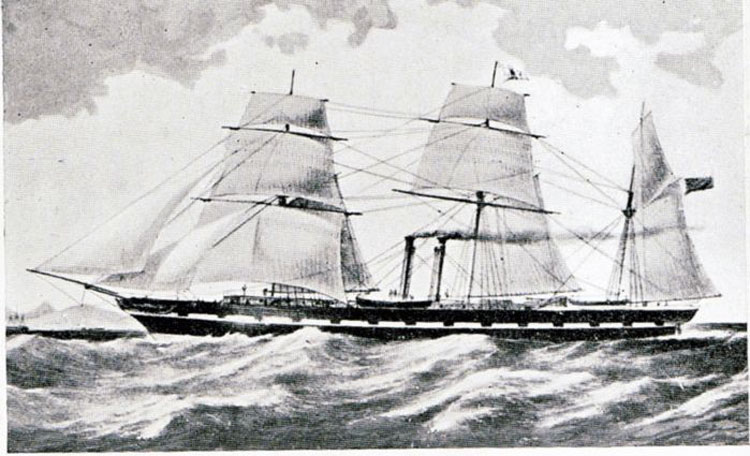
Dickson
Gregory's
"Australian Steamships"
SARAH
SANDS
- iscs
1,400t 1847 Liverpool
(T.
& J. Sands)
The second
largest screw
steamer built after the GREAT BRITAIN. Intended for the
Australian
trade, she was chartered on completion to the American Red
Cross Line
to open a Liverpool-New York service. In 1849, she was sent
around Cape
Horn to the Pacific to provide a service between Panama
and San
Francisco. She crossed the Pacific to Sydney in 1952, and made
another
voyage to Australia from Liverpool in September 1852 returning
to Plymouth in
May 1853. She became troop transport in the Crimean
war, and was
converted to sail after this service.

R.A.
Fletcher's "Steam Ships And Their Story"
CLEOPATRA - iscs 14529gt 893nt
1852 Dumbarton (MacKean,
McLarty
&
Co.) (Vctorian shipping arrival and departure
records give tonnage as
1500gt and
893nt). On her maiden
voyage to Australia, she left London
on 7
September
1852 and arrived
at Adelaide on 9 December, Melbourne
on 22
December and Sydney on
5 January1953. She
then appears to have
carried
passengers and cargoes between Sydney,
Melbourne and
Adelaide
over a
period of close to six months before leaving Australia
in June 1853
to return
to
London. There is no record of the vessel returning to any
Australian
ports, for which there are published shipping arrival and
departure
records, up to and including 1860. Cleopatra does not
appear in
the Lloyds Register until the 1855/1856 edition where she is
recorded as
under
Canadian ownership and on the Liverpool-Montreal
route.
Subsequently, under new owners she is recorded as in the London-
West Indian
trade.
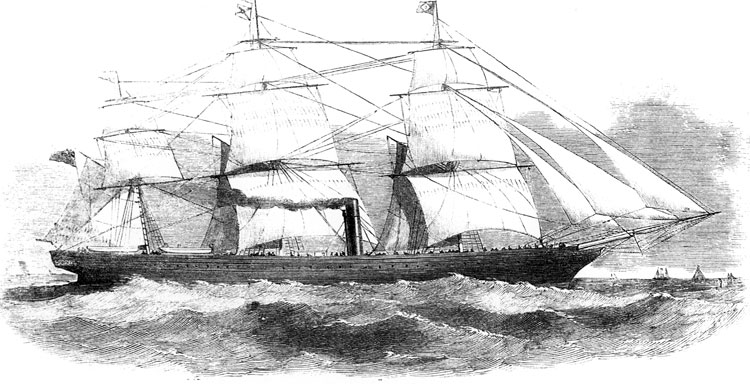
Illustrated London News 1852
GREAT VICTORIA (ex-JACQUARD) -
iscs 3s 2398gt 1854
Nantes. She
was used as a
troop transport by the French Government in the Crimean
war. In
1863, she was acquired and
lengthened by Black
Ball Line for the
Australian trade. On
her first voyage, she carried 629 migrants to Brisbane
arriving in
December 1865..
The Black Ball Line
was facing financial
difficulties,
and the emigrant trade was in recession in the late 1860s.
Her last
sailing Liverpool -Melbourne was in July 1869. She was sold in
1870 and
sold again in 1874 when the vessel was converted to sail.
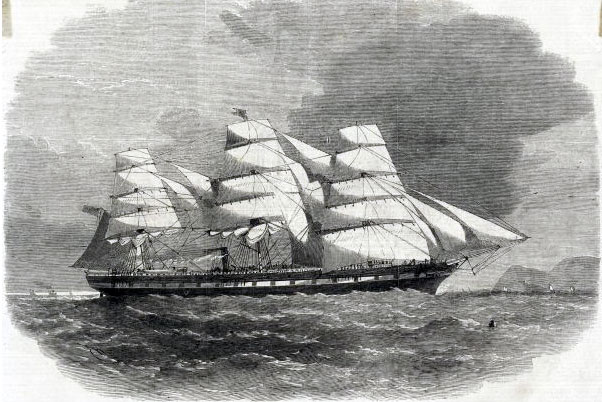
Illustrated London News 1863
HERO - scs
985gt
1861 Kingston-upon-Hull. In 1863, owned by James
Baines &
Joseph
Greaves. In July 1863, the vessel was dispatched to
Melbourne for
use in the
Australian coastal trade under the management
of Bright Bros.
& Co.
of Melbourne.
In 1865, she was chartered by the
Queensland
colonial government for a service between Brisbane and
Batavia
to connect with the British India S.S. Company's mail steamers.
This pioneeered
a service by the British India company to Queensland via
the Torres
Straits by that company. The vessel came under new owners
and managers in
1878, and was purchased
in 1880 by the Union Steamship
Co. of New
Zealand. She was for a time on
the New Zealand run and the
for some years
on the service to Fiji from Melbourne.
She was sold to a
French company
in Noumea in 1891where she ended her days as a hulk.

Drawing by
Charles
Dickson Gregory
QUEEN OF THE THAMES - iscs 3s 2,607gt 1870
Glasgow (Deviit &
Moore)
Wrecked
March 1871 at South Africa on her return from her first
voyage
to
Australia
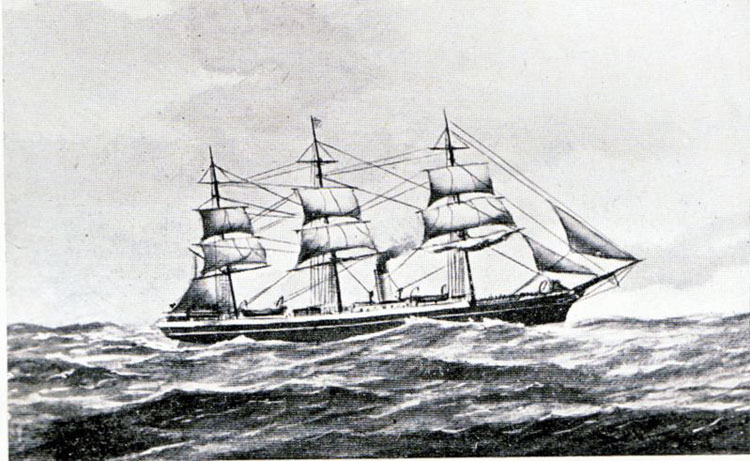
Illustrated
London News 1870
ROYAL STANDARD
- icsc 3s 2033gt 1863 Jarrow (White Star Line). In
her first
voyage to Australia, she reached Melbourne in February 1864.
She hit an
iceberg on her return journey around Cape Horn and had to
limp into Rio
de Janeiro for repairs. It was a time
when the emigrant trade
to Australia
was in recession. The vessel was sold
in 1867 and converted
to
sail. She
was wrecked on the coast of Brazil in 1869.
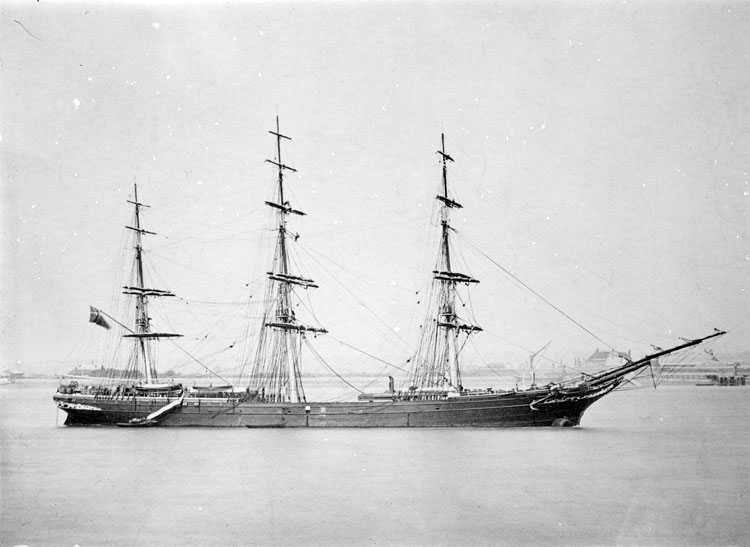
After
conversion to sail.
State Library of Victoria
Sources
1. John M. Maber’s “North
Star to Southern Cross” (T. Stephrnson &
Sons Ltd., Prescot, Lancs 1967);
2.
Dickson Gregory's "Australian
Steamships Past and Present"
(The
Richard Press Ltd., London 1928),
3. R.A.
Fletcher’s
“Steam-Ships and Their Story"
(Sidgwick &
Jackson Ltd.,
London 1910);
4. Marten
Symes'
"Shipping Arrivals & Departures, Victorian Ports 1846-55"
and for "1856-1860";
5. Lloyds Register of British and
Foreign Shipping.
(RETURN)









